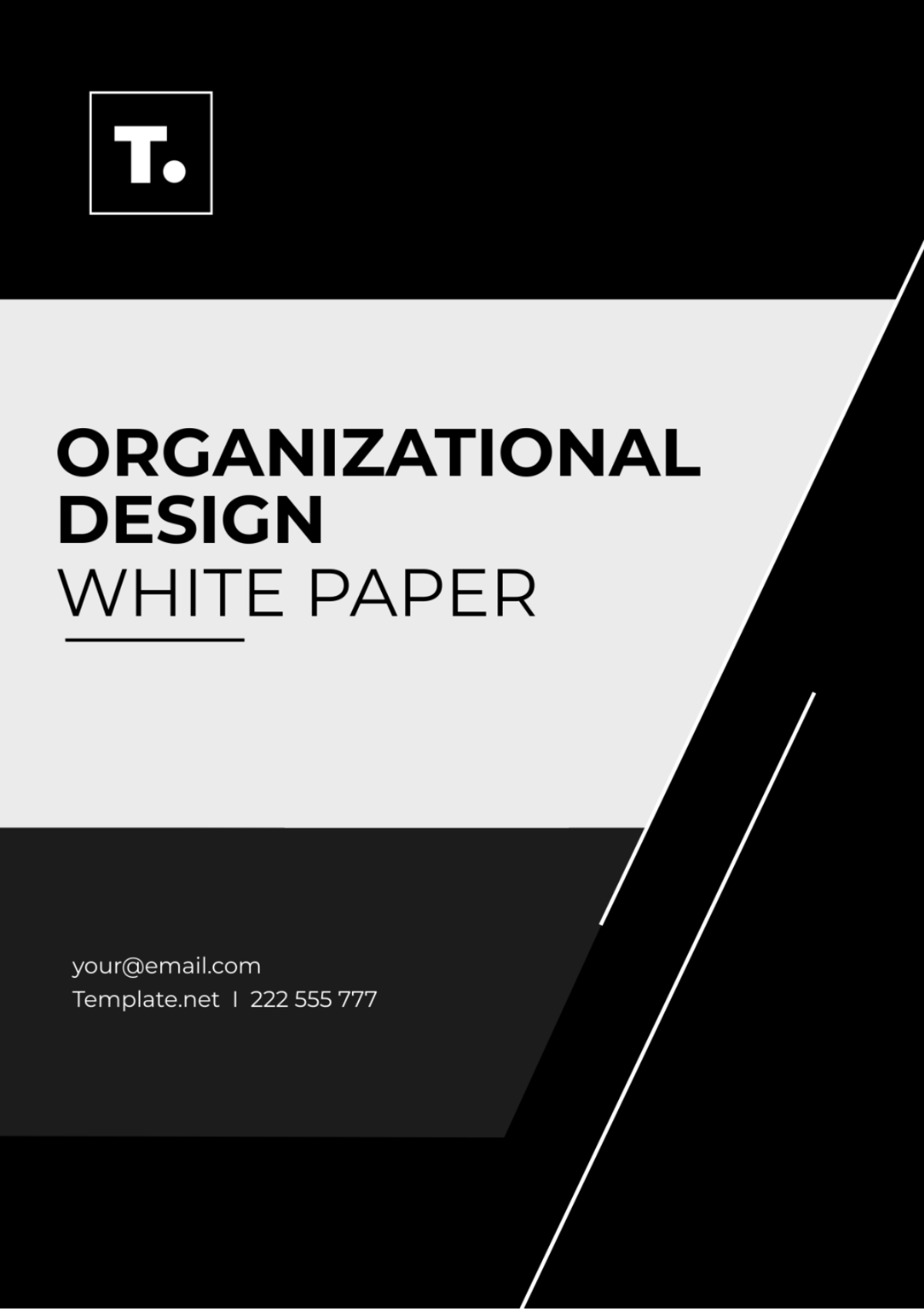Free Organizational Design White Paper

Organizational Design: Optimizing Structure for Success
Author: [Your Name]
Position: [Your Position]
Company: [Your Company Name]
Date: [Date]
Department: [Your Department]

I. Abstract
Organizational design plays a pivotal role in shaping the success trajectory of any enterprise. This white paper delves into the intricacies of organizational design, elucidating its significance, theoretical frameworks, influencing factors, best practices, and real-world case studies. By aligning structure with strategy, fostering agility, and nurturing a culture of innovation, [Your Company Name] can harness the power of organizational design to optimize performance and thrive in today's dynamic business landscape.
II. Introduction
Organizational design is paramount for navigating the complexities of today's business landscape. It serves as the backbone for achieving operational efficiency, fostering innovation, and maintaining adaptability in an ever-evolving environment.
III. Understanding Organizational Design
A. Definition and Concept
Organizational design entails structuring roles, responsibilities, and relationships within [Your Company Name] to accomplish specific objectives. It encompasses various elements such as hierarchy, workflow, communication channels, and culture, all of which contribute to the organization's effectiveness.
B. Theoretical Frameworks
Multiple theoretical frameworks guide organizational design. Contingency theory, for instance, emphasizes the need for organizational structures to align with external factors such as technology and market dynamics. Similarly, the sociotechnical systems theory underscores the interplay between organizational structure and technology in optimizing performance.
C. Factors Influencing Organizational Design
Several factors influence organizational design at [Your Company Name], including size, technology, strategy, and the external environment. For instance, organizations facing uncertainty tend to adopt decentralized structures to enhance flexibility and responsiveness.
IV. Best Practices in Organizational Design
A. Aligning Structure with Strategy
Aligning organizational structure with strategic objectives is crucial for success in today's competitive landscape. As [industry leader] once said,
'[A well-aligned structure ensures that every part of the organization is working towards the same goals, driving coherence and maximizing impact.]'
B. Agile Organizational Design
In today's fast-paced environment, organizational agility is imperative for success at [Your Company Name]. Embracing agile principles such as customer-centricity and cross-functional collaboration enhances adaptability and responsiveness.
Figure 1: Trend of Organizational Agility Over Five Years
C. Designing for Innovation
Organizational design significantly influences innovation culture. For instance, [Your Company Name] can encourage innovation by allowing employees to dedicate a portion of their time to passion projects, following the example of 3M Corporation.
V. Case Studies
A. Apple Inc.
Apple's functional organizational structure under Steve Jobs facilitated product innovation, exemplifying effective organizational design.
B. Spotify
Spotify's decentralized structure empowers autonomous teams, enabling rapid iteration and innovation in a competitive market.
VI. Conclusion
Organizational design is not merely a theoretical concept but a critical driver of success for [Your Company Name]. By aligning structure with strategy, embracing agility, and fostering a culture of innovation, [Your Company Name] can optimize performance and thrive in today's dynamic landscape.
VII. References
Donaldson, L. (2001). The contingency theory of organizations. Thousand Oaks, CA: Sage Publications.
Galbraith, J. R. (1971). Matrix organization designs: How to combine functional and project forms. Business Horizons, 14(1), 29-40.
Isaacson, W. (2011). Steve Jobs. New York, NY: Simon & Schuster.
Kniberg, H., & Ivarsson, A. (2012). Spotify engineering culture (part 1). Retrieved from https://engineering.atspotify.com/2014/03/27/spotify-engineering-culture-part-1/
Lawrence, P. R., & Lorsch, J. W. (1967). Differentiation and integration in complex organizations. Administrative Science Quarterly, 12(1), 1-47.
Mintzberg, H. (1980). Structure in 5's: A synthesis of the research on organization design. Management Science, 26(3), 322-341.
Rigby, D. K., Sutherland, J., & Takeuchi, H. (2016). Embracing agile. Harvard Business Review, 94(5), 40-50.
3M Corporation. (n.d.). Life with 3M. Retrieved from https://www.3m.com/3M/en_US/careers-us/working-at-3m/life-with-3m/
- 100% Customizable, free editor
- Access 1 Million+ Templates, photo’s & graphics
- Download or share as a template
- Click and replace photos, graphics, text, backgrounds
- Resize, crop, AI write & more
- Access advanced editor
Discover the ultimate solution for crafting a comprehensive Organizational Design White Paper with Template.net's editable and customizable template. Seamlessly tailor your document to your company's needs using our intuitive AI Editor Tool. Elevate your business strategy with clarity and precision. Unlock the power of effective organizational design today.





























